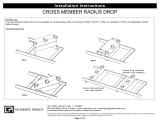
EN 5
5
Job Control (continued)
Duplex Page Side Selection
Prints the logical page on the specified physical page side.
? & a # G
# = 0 - Select next side
1 - Select front side
2 - Select back side
If a non-duplex printer receives this command, it performs a page eject.
Job Separation
Toggles the printer's job separation mechanism.
? & l 1 T
Output Bin
Selects the output paper bin for paper output.
? & l # G
# = 0 - Automatic selection
1 - Upper Output Bin (for the LaserJet 5Si,
printer top/face-down bin—bin #1)
2 - Rear Output Bin (for the LaserJet 5Si, printer
left/face-up bin—bin #2; this bin is not available
when the High Capacity Output (HCO) is attached)
3 - Selects Bin #3 (HCO face-up bin)
4 - Selects Bin #4 (HCO #1 face-down bin)
5 - Selects Bin #5 (HCO #2 face-down bin)
6 - Selects Bin #6 (HCO #3 face-down bin)
7 - Selects Bin #7 (HCO #4 face-down bin)
8 - Selects Bin #8 (HCO #5 face-down bin)
9 - Selects Bin #9 (HCO #6 face-down bin)
10 - Selects Bin #10 (HCO #7 face-down bin)
11 - Selects Bin #11 (HCO #8 face-down bin)
Unit of Measure
Establishes the unit of measure for the PCL unit.
? & u # D
# = Number of units/inch (96, 100, 120, 144, 150, 160, 180, 200,
225, 240, 288, 300, 360, 400, 450, 480, 600, 720, 800, 900,
1200, 1440, 1800, 2400, 3600, 7200)
Learn.fm Page 5 Tuesday, June 22, 1999 8:17 AM




















